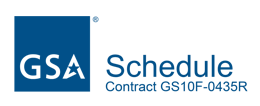Tips for Running Technical Meetings
By Michael Wilkinson, CMF
Managing Director, Leadership Strategies, Inc.
In a regular business meeting, it can be difficult enough just managing the different personal agendas and keeping things on track. But add the complexities of a technical meeting and the difficulties escalate significantly.
Leadership Strategies has published nearly 100 tips for facilitating meetings and business sessions. Most of these tips apply to technical meetings as well. However, we have found that there are a few special tricks of the trade to help with technical meetings.
What do we mean by a “technical meeting?”
- A technical meeting typically involves the review or creation of information that requires the participants to have an in-depth understanding of complex terminology or processes.
- A technical meeting can be complex because of the nature of the industry (e.g., pharmaceutical, engineering, banking) or the nature of the meeting (e.g., data modeling, impact analysis, requirements definition).
Why are technical meetings especially difficult?
1. The nature of the subject matter is typically more complex.
Technical meetings often require that a lower level of detail be discussed and analyzed during the meeting. The greater amount of detail requires a more intense level of focus and concentration by the meeting attendees.
2. There tends to be greater variation in the level of understanding of the information.
Some meeting participants will understand the material very well while others may barely grasp the significance of the finer points. The less informed often find themselves so confused and bewildered that they can’t even figure out what question to ask. The more informed often lose patience with the pace and seemingly wasted time.
3. The complexity of the material makes it easy to “focus on trees and miss the forest.”
In regular business meetings, it is easy for a session to lose focus when a person begins discussing an unrelated topic. In technical meetings, it is not unusual for legitimate topics to be filled with “land mines (irrelevant points of disagreement) and rat holes (interesting discussions that lead no where)” that can lead to passionate, but unproductive technical debates that chew up time without generating a valuable return.
What are some of our tips for technical meetings?
- Mentor the less knowledgeable. Hold advance orientation sessions for those who are less educated on the technical issues. Consider partnering the novices with the more knowledgeable. Give the more knowledgeable the job of ensuring that their partners understand what is going on during the session. Create and maintain an ongoing glossary of terms and acronyms. Keep common acronyms posted in the meeting room.
- Establish “knowledge-empowering” ground rules. Use ground rules to ensure that the meetings empower with knowledge without unduly slowing down the session. Some appropriate ground rules might include : “Define and post all acronyms when used the first time. Everyone has the right to ask ‘What does that mean?’ and ‘Why is that done?’”
- Get everyone engaged early in avoiding “land mines and rat holes.” Suggest that each person constantly asks, “Is this discussion necessary now?” Give participants the responsibility of putting this question to the group whenever they feel the group is engaged in an unnecessary discussion.
- Break the agenda into smaller pieces. For an all-day or half-day session, limit each agenda item to increments of 30-45 minutes where possible. These frequent agenda “chunks” allow participants to sense progress. It also allows the mind to “let go” as pieces of the puzzle are gradually put into place.
- Check frequently for agreement. Take additional time to ensure that the entire group has sufficient understanding before moving from point to point. In a technical session, the knowledgeable few can easily overpower the quiet majority. Therefore, summarize each point thoroughly and check for full agreement before moving on.
- Post decisions as they are made. Be sure all decisions are clearly visible to everyone. This practice increases a sense of progress, reminds the participants of the decisions that have been made, and discourages going back over old ground.
- Take more frequent breaks. In regular business sessions, we typically break every 90-120 minutes. For technical sessions, breaking every 75-90 minutes may be more appropriate to refresh from the intensity of the sessions.

